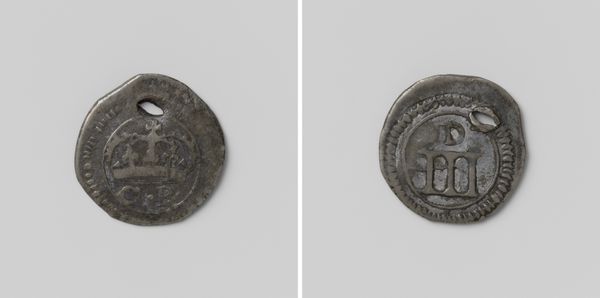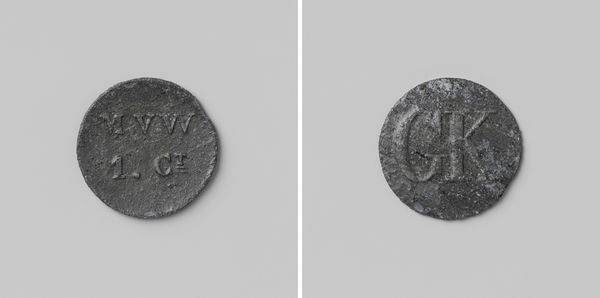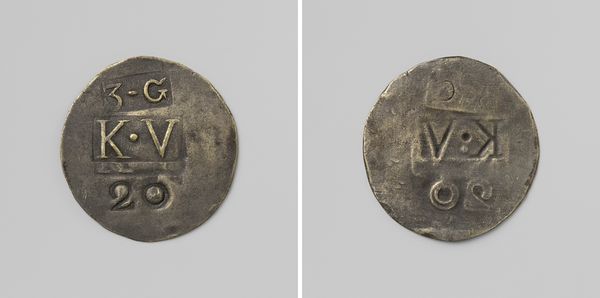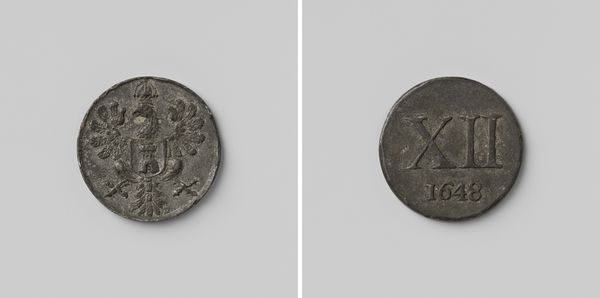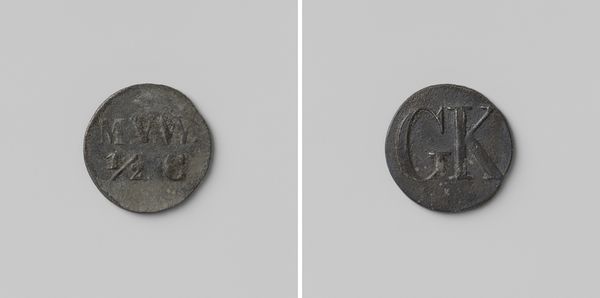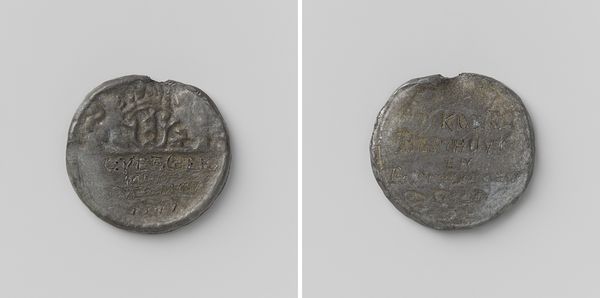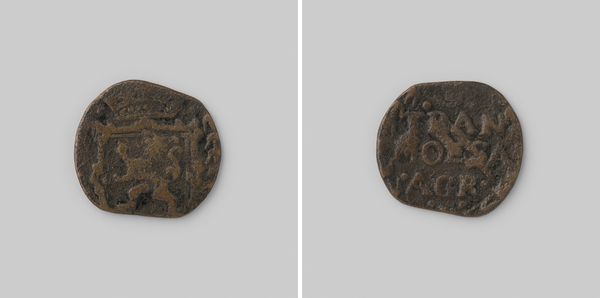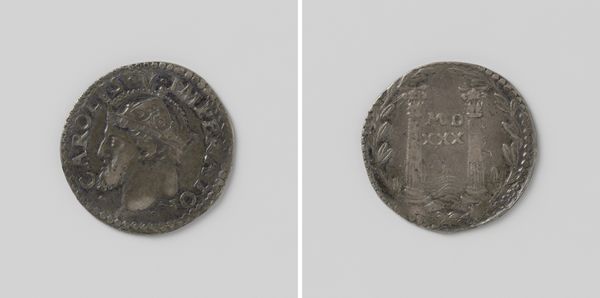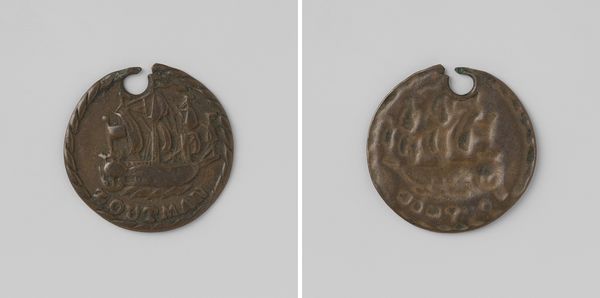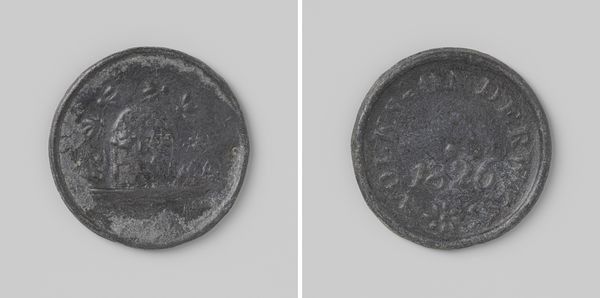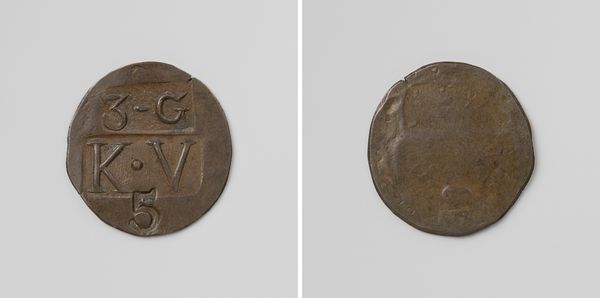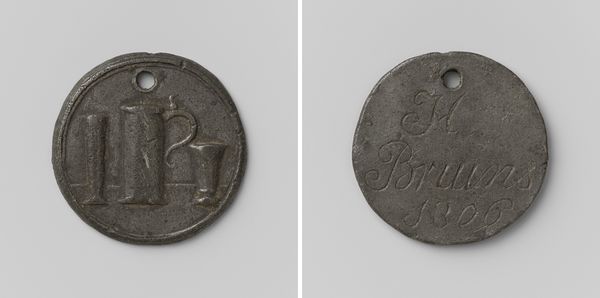
Vier pence, noodmunt van Karel I, koning van Engeland te Ormond geslagen van het door de ingezetenen opgebrachte zilver 1643
0:00
0:00
anonymous
Rijksmuseum
print, metal, relief
#
portrait
#
medieval
#
baroque
# print
#
metal
#
sculpture
#
relief
#
ancient-mediterranean
Dimensions: diameter 1.7 cm, weight 1.93 gr
Copyright: Rijks Museum: Open Domain
Curator: This intriguing piece, housed here at the Rijksmuseum, is titled "Vier pence, noodmunt van Karel I, koning van Engeland te Ormond geslagen van het door de ingezetenen opgebrachte zilver". Dating back to 1643, it’s an example of a necessity coin of Charles I of England, struck in Ormond. Editor: It has an austerity to it. A very unadorned composition and the metal has such a weathered tone. I suppose its form really follows function. The rough edges create such an irregular shape overall. Curator: Exactly. "Necessity coin" indicates the circumstances of its creation, the material employed—silver collected from locals—points to Charles I’s diminishing power, specifically that he had limited minting resources. Ormond became a Royalist stronghold during the English Civil War. Editor: So, it represents the material realities of conflict and desperation. How does that tension play out in the visual structure? What exactly do we see depicted here? Curator: The obverse features a crown above "CR," standing for Carolus Rex, Charles King, along with beaded edging. On the reverse are Roman numerals denoting four pence, and this again underscores the immediate monetary requirements in Royalist territories. It’s a raw statement about governance in wartime. Editor: And given its diminutive scale, its metallic medium also becomes significant. Coins as bearers of cultural values, as reflections of both economic stability and authority. But in this instance, quite the contrary, they reveal fracture and uncertainty. Curator: This piece really exemplifies the interweaving of artistic practice and historical circumstance. The crude workmanship, the choice of available materials, and the symbols it presents provide such powerful insight. It is much more than currency. Editor: Precisely, in analyzing its components, from edge to engraved details, the stark form of these "Vier pence" encapsulates complex power dynamics of seventeenth-century England. Thanks for drawing out these connections!
Comments
No comments
Be the first to comment and join the conversation on the ultimate creative platform.
